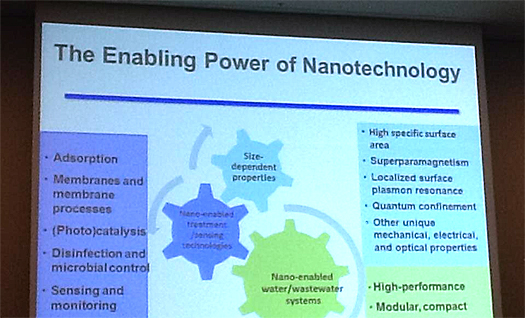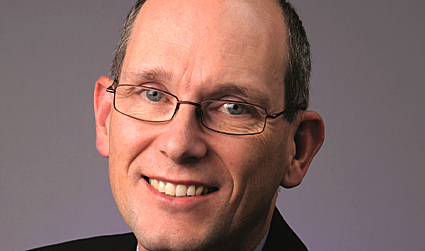IWA Busan 2012: Risks of nanotechnology as water treatment must be clearly determined
"How do we inform the public about nanotechnology for water treatment? This requires that, in all of the research, the risks be clearly determined and that communication about them be objective."
"Within IWA's specialist group Nano and Water we are actively working on this," said Jan Hofman of KWR Watercycle Research Institute during the workshop at the IWA World Water Congress in Busan, Korea on September 17th.
Prevention of tall stories
"How can one prevent, as in the case of genetically modified food, all sorts of tall stories from circulating on nanotechnology for water treatment?", Hofman wondered at the workshop. He lead the workshop as chair of IWA's specialist group Nano and water.
At the IWA World Water Congress a number of workshops and presentations were dedicated to nanotechnology. This technology is based on tiny particles (from 1 to 100 nanometres) which, on the one hand, are used as a tool in water treatment and, on the other, can lead to problems since they end up in drinking water.
Different behavior
In the workshop Hofman addressed the laws and regulations concerning nanotechnology. "Nanoparticles, that is, extremely small substance particles, behave differently from the bigger members of their family", said Hofman.
"For example, they have a relatively large surface, so that they can absorb more. This can be made use of, but it can also lead to problems. They are generally very reactive substances. If they end up in the wrong place, they can very quickly cause a wrong reaction and thus be harmful to people or the environment. Laws and regulations have to be attuned to this."
Membranes with nano-particles already on the market
Nanotechnology is still hardly used in the treatment of water for water production. Nevertheless Hofman sees various possibilities.
"There are already nanoparticle-containing membranes on the market that permit easier water flow-through, and therefore require less pressure and less energy. Nanoparticles can also absorb heavy metals and pharmaceuticals in the water. A third application possibility is the catalyzing of a chemical reaction that is needed to treat the water."
Hofman stresses that all the techniques require further research.
Read more on the special website of KWR Busan 2012
.
Dr Bas Hofs, KWR Watercycle Research Institute, Netherlands, explains how nanotechnology may contribute to water purification (English subtitled).
More information
KWR Watercycle research institute
Nieuwegein, the Netherlands
+31 30 60 69 511
www.kwr.nl
IWA specialist group Nano and water
secretary
Edinburgh, United Kingdom
+44 131 650 5712
www.iwahq.org
Nano Next NL
Utrecht, the Netherlands
+31 30 6001 363
www.nanonextnl.nl
(the Nano Next NL consortium is a Dutch reseach programme on nanotechnology, involving over hundred companies, institutes and governmental bodies. One of the themes is water treatment and includes research on nano-to-macro integration for catalysis applications)






